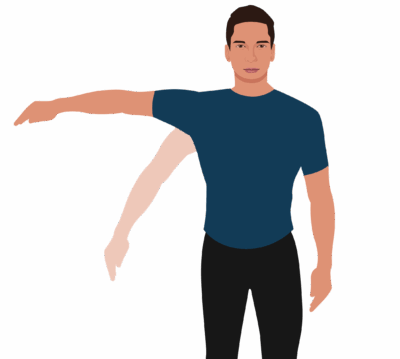Drop Arm Test
The Drop Arm Test is an orthopedic examination used to assess the integrity of the rotator cuff, especially the supraspinatus muscle and tendon. It helps identify full-thickness tears and significant dysfunction of the rotator cuff, as well as associated shoulder weakness or pain.
How the Test is Performed
-
The client is seated or standing with arms relaxed.
-
The therapist passively abducts the client’s arm to 90° (shoulder height, out to the side).
-
The client is then asked to slowly lower the arm back down to the side in a controlled manner.
-
A positive Drop Arm Test is when the client is unable to lower the arm smoothly and it drops suddenly, or if the client reports sudden pain or weakness during controlled descent.
Clinical Significance
-
A positive test suggests a full-thickness supraspinatus (rotator cuff) tear or severe dysfunction; the arm “drops” because the weak/torn muscle cannot maintain controlled descent.
-
Severe pain, “giving way,” or inability to hold the arm at shoulder height against gravity are typical findings.
Assessment
-
Employ this test for clients with suspected rotator cuff tear, shoulder trauma, persistent pain, or unexplained loss of overhead function.
-
Document the quality of descent, client’s pain, and any asymmetry between shoulders; use test results to guide monitoring and treatment planning.
Treatment
-
No deep tissue, aggressive stretching, or forceful mobilization of the shoulder as these are contraindicated and may worsen injury.
-
Focus massage on reducing compensatory tension in adjacent muscles (deltoid, trapezius, upper back).
-
Educate clients about activity modification and avoiding heavy/overhead lifting until evaluated and cleared by a physician or physical therapist.
Safety and Referral
-
If the Drop Arm Test is positive, refer to a physician or physiotherapist for imaging and further rotator cuff assessment before any rehabilitation or return to vigorous activity.
-
Monitor for red flag symptoms: severe pain, weakness, or inability to perform daily activities.

